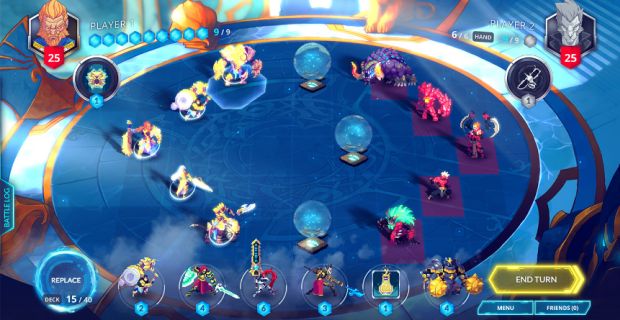

Over the next few weeks we will be testing out a brand new feature we’re very excited about: Limited Time Boss Battles
We’re super excited. Here’s how it all works:
- During select time periods a special boss event will become available for a limited time (we are planning for the first 2 to be available for a week starting on a Monday and ending on Sunday).
- You will see a callout for the Boss Battle in the main menu.
- Each Boss is a unique AI controlled opponent with a unique deck and starting board state.
- Defeating the Boss in battle will earn you 1 Free Spirit Orb and a unique Boss Crate.
- The Boss crate costs $4.99 to unlock and contains:
- 1 Common Chest Key
- 1 Gauntlet Ticket
- 3 Shim’zar Spirit Orbs
- 1 Random Legendary Card
- The Boss crate expires 48 hours after you have earned it.

We putting The Daily Challenge on a break and replacing it with a Free Common Card of the Day. You can claim one random common craftable card every 24 hours in place of the 5 Gold reward that the challenges offered.
We know there are a lot of challenge lovers out there so we want to regroup and explore a better vehicle to deliver challenges for those players that love that game mode.
There are 3 main reasons:
- The Core set was continuously getting more expensive and was starting to have too much rarity creep.
- We could only effectively do Neutrals.
- It puts a lot of community focus on only a small set of four cards, pressuring us to print universally viable neutral cards instead of cards that make great sense as part of a cohesive expansion theme.

In this mode, you will pick a General, receive a fairly basic starting deck, and improve your deck over time by leveling up.

But there are a number of twists including something special: in this mode you can build cross faction decks.

That’s all we’re going to reveal for right now, but feel free to start dreaming up zany cross faction combos you can build.
* Mobile and Console development.
* Localization and worldwide release.
* Card Expansions, Boss Events, and new Game Modes.


























